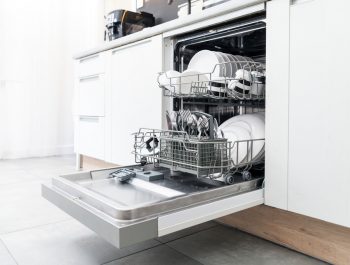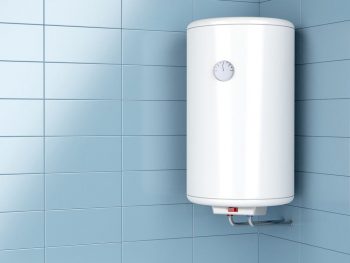
In the world of vacuum cleaners, Shark vacuums have carved out a niche for themselves due to their impressive suction power, versatility, and durability. However, like any other appliance, they require regular maintenance and occasional repairs, which may involve taking the vacuum apart. This comprehensive guide provides a step-by-step process on how to safely disassemble your Shark vacuum for cleaning or repair.
To take apart a Shark vacuum, first unplug the vacuum and gather necessary tools. Remove the dust cup by pressing the release button. Detach the hose and handle by pressing the hose release button and unscrewing the handle. Disassemble the main body and motor by detaching the hose and dustbin and unscrewing the casing. Finally, take apart the brush roll by removing the bottom faceplate or cover and removing the brush roll from the belt. Remember, the specific steps may vary depending on your vacuum model, so always refer to your user’s manual for specific instructions.
Preparatory Steps
Before you dive into the disassembly process, there are a few preliminary steps to take. Always remember to unplug the vacuum cleaner before starting any repairs to avoid electrical hazards. Gather all the necessary tools such as a Phillips head screwdriver, a flathead screwdriver, pliers, and needle-nose pliers. Some Shark vacuum models may require a special security bit, such as a star-shaped bit with a hole in it, for tamper-resistant Allen screws.
Prepare a clean, spacious workspace and keep a note or take photographs of the equipment before and during disassembly to help with reassembly later on. Organize screws and small parts by screwing them back into their respective holes or taping them to the correct location.
Disassembling the Shark Vacuum
Removing the Dust Cup
First, locate the dust cup release button, usually near the top of the main body. Press the dust cup release button and gently tilt the dust cup towards you to separate it from the vacuum. Hold the dust cup over a trash bin and press the lower dust cup release tab to open it.
Detaching the Hose and Handle
Press down on the hose release button and pull the hose away from the vacuum. Locate the single 13.4 mm screw underneath the handle grip and remove it. Use a spudger or a flathead screwdriver to gently pry open the handle. Once the handle is open, you can access the hose connection and carefully remove it from the handle.
Disassembling the Main Body and Motor
Detach the hose and dustbin from the vacuum. Use a T20 screwdriver to remove the screws holding the vacuum’s casing together. Once the screws are removed, carefully open the vacuum top to access the motor. Untangle or unhook any wires connected to the motor and remove it from the casing.
Taking Apart the Brush Roll
Lay the vacuum on its side to access the brush roll area. Remove the bottom faceplate or cover that protects the brush roll. Once the cover is removed, you should be able to see the brush roll and belt. Remove the brush roll from the belt and clean it by removing any hair, debris, or tangled materials.
Reassembling the Shark Vacuum
When reassembling the vacuum, ensure all parts are completely dry. Reattach the handle hose and reinstall the filters. Reassemble the brush head and reconnect the hose. If you’ve removed any other parts for cleaning or repair, such as the dust canister or accessories, reattach them to the vacuum.
Safety Precautions
To avoid damaging your Shark vacuum during disassembly, follow safety precautions such as wearing gloves to protect your hands from sharp edges, and holding onto small pieces to prevent them from falling inside the vacuum. When cleaning the vacuum parts, use water only to prevent damage from other cleaning chemicals. Always ensure all filters are completely dry before reassembling the vacuum to prevent liquid from getting into the electrical ports.
Disassembling a Shark vacuum may seem daunting at first, but with the right tools and careful attention to detail, you can keep your vacuum running smoothly and efficiently. Remember, the specific steps may vary depending on your vacuum model, so always refer to your user’s manual for specific instructions.
Frequently Asked Questions
Is it necessary to disassemble my Shark vacuum for regular cleaning?
No, it’s not necessary to disassemble your Shark vacuum for regular cleaning. Regular maintenance usually involves emptying the dust cup and cleaning the filters. However, if you notice a decrease in suction power or if the vacuum is not working as efficiently as it should, it might be time for a more thorough cleaning, which would involve disassembly.
What should I do if I can’t remove a screw during the disassembly process?
If a screw is stuck and you can’t remove it, try using a different screwdriver or applying a penetrating oil like WD-40. Let the oil sit for a few minutes, then try again. If you still can’t remove the screw, it might be time to call a professional for help.
How often should I clean my Shark vacuum?
The frequency of cleaning depends on how often you use your vacuum. As a rule of thumb, Shark recommends cleaning the filters every three months under normal usage. However, if you use your vacuum frequently or have pets, you might need to clean it more often. Always refer to your user’s manual for specific cleaning instructions.
Can I use soap to clean the vacuum parts?
Yes, you can use mild soap and warm water to clean the non-electrical parts of your Shark vacuum, such as the dust cup and filters. However, make sure to rinse them thoroughly and let them dry completely before reassembling the vacuum.
Do I need to replace the filters after cleaning?
Not necessarily. Shark vacuum filters are designed to be cleaned and reused. However, if you notice any damage or if the filters are very dirty and can’t be cleaned thoroughly, it might be time to replace them. Always refer to your user’s manual for specific instructions on replacing filters.












